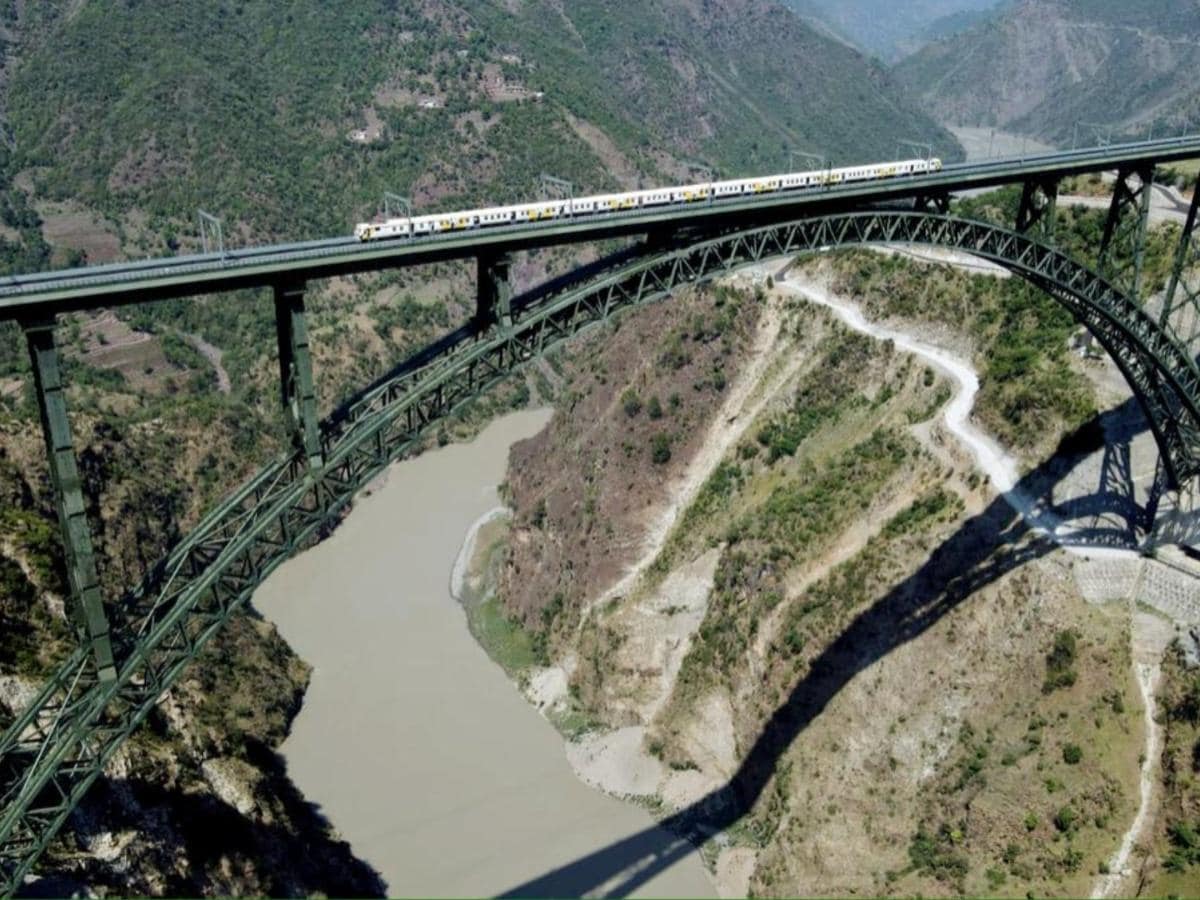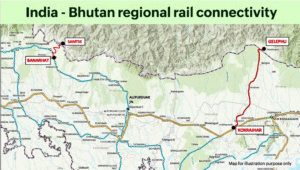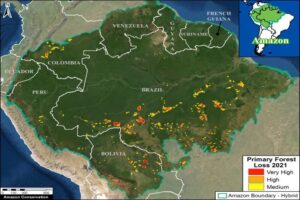
The Train to Kashmir: USBRL & Chenab Bridge – A CLAT 2026 Insight
Introduction
The inauguration of the Udhampur-Srinagar-Baramulla Rail Link (USBRL) by Prime Minister Narendra Modi in June 2025 marks a monumental chapter in India’s infrastructure and national integration. It not only connects the Kashmir Valley with the rest of India through an all-weather rail network, but also brings with it immense economic, strategic, and socio-cultural implications.
For CLAT 2026 aspirants, the USBRL project and the world’s highest railway bridge over the Chenab River are of immense importance in the Current Affairs 2026 section. The project represents a unique confluence of civil engineering, policy execution, regional development, and national security.
Why in News
– PM Narendra Modi inaugurated the USBRL on June 6, 2025, and flagged off two Vande Bharat trains connecting Katra and Srinagar.
– He walked across the newly constructed Chenab Railway Bridge in Reasi district — the world’s highest railway bridge.
– Modi condemned Pakistan’s role in recent Pahalgam terror attacks, linking it to a broader attack on Kashmir’s economy and tourism.
– The Chenab Bridge and USBRL are expected to strengthen India’s hold in the region and boost tourism and employment in J&K.
Project Highlights
– USBRL: Udhampur-Srinagar-Baramulla Railway Line
– Total Length: 272 km
– Sections: Udhampur-Katra (25 km), Katra-Banihal (111 km), Banihal-Qazigund (18 km), Qazigund-Baramulla (118 km)
– 943 bridges and 36 tunnels across challenging terrain.
– Key Bridges:
– Chenab Bridge: Tallest railway bridge in the world (359 m above Chenab River)
– Anji Khad Bridge: First cable-stayed railway bridge in India
– Designed for all-weather connectivity; seismic dampers installed to withstand earthquakes and landslides.
– Trains will operate even in harsh winters with heated windshields, insulated toilets, and snow removal capability.
Economic and Strategic Importance
– Expected to revolutionise trade and tourism in J&K.
– Ensures all-season connectivity for people and goods, especially crucial for remote regions.
– Boosts religious tourism to Vaishno Devi and Amarnath.
– Enhances military logistics along northern borders.
– Reconnects Jammu and Kashmir with the national rail network after 75 years of disconnection since Partition.
Historic Journey
– Railway line proposed in 1902 between Rawalpindi and Srinagar.
– Due to political issues, only completed in phases after Indian independence.
– USBRL saw accelerated development under successive governments, culminating in final completion in 2025.
Infrastructure Marvel
– Chenab Bridge: Built using 29,980 tonnes of steel, designed to withstand Zone-V earthquakes and last over 120 years.
– Seismic dampers, cable-stayed design, snow-resistant tracks make it one of the most advanced rail systems in the world.
– Makes travel time between Jammu and Srinagar under 3 hours.
Explanation of Key Terms (Notes)
– USBRL: Railway project connecting Udhampur to Baramulla via Srinagar.
– Chenab Bridge: Highest railway bridge in the world (359m above riverbed).
– Anji Khad Bridge: India’s first cable-stayed railway bridge.
– Vande Bharat: India’s semi-high-speed train.
– Seismic Dampers: Devices that reduce structural vibrations during earthquakes.
– Cable-stayed Bridge: A bridge supported by cables directly connected to towers.
– All-weather Connectivity: Infrastructure operational in every season, even during snow and landslides.
Relevance for CLAT 2026
– Infrastructure law and public policy implications.
– Legal and constitutional aspects of regional connectivity.
– National security and its link with development projects.
– Geography and economy-based current affairs for CLAT GK.
– Legal provisions related to land acquisition, disaster management, and public interest infrastructure.
Conclusion
The Train to Kashmir project through the USBRL is more than an engineering feat — it is a political, strategic, and economic milestone. As India connects its northernmost state through rail, it reaffirms its commitment to inclusive development and national unity.
For CLAT aspirants, this project is a brilliant example of how infrastructure intersects with law, policy, and nation-building.




